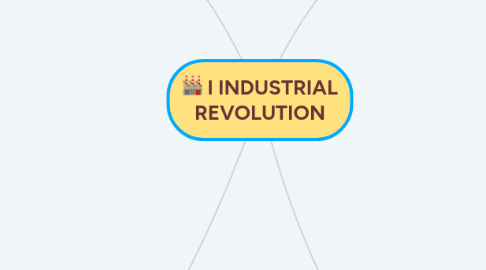
1. A factory system was born
1.1. The production activities were concentrated in factories.
1.2. The working conditions were very heavy
1.2.1. In the textile industry, women and children were exploited
1.2.2. Labour hours were 12-16 hours a day
1.3. The spread of factories had positive and negative consequences
1.3.1. Positive consequences:
1.3.1.1. Mechanization of the weaving;
1.3.1.2. Growing disposability of consumer goods;
1.3.1.3. Thanks to machines, the labour was simplified;
1.3.1.4. The workers had to do a few repetitive tasks so, there wasn't the need of a specialised manpower.
1.3.2. Negative consequences
1.3.2.1. Exploitation of the workers;
1.3.2.2. Child labour;
1.3.2.3. Formation of unhealthy workers’ areas;
1.3.2.4. Disorders caused by repeating the same actions for a long time (es. nervous tics)
1.4. Employement of a large number of workers
1.5. Introduction of automatic machines in production
2. Agricultural Revolution
2.1. Population increase;
2.2. Need for more food;
2.3. Increment of land productivity (landowners invest farm incomes in manufacturing enterprises);
2.4. Landowners recite the "Open fields" (many farmers, to escape poverty, move to the city to work in factories).
2.4.1. MUSHROOM TOWNS
2.4.1.1. Small towns built near factories to house the workers
3. England(last 18th century-early 19th century)
3.1. It was more specialised in the technology industry
3.2. It had natural resourches, manpower and capital
4. Factors that permitted it to develop:
4.1. Urbanization
4.1.1. The city increases the difference between people, so two social classes were born
4.1.1.1. The working class
4.1.1.1.1. 13/15 hours of work
4.1.1.1.2. precarious work
4.1.1.1.3. low pay
4.1.1.1.4. working masses
4.1.1.1.5. alienation
4.1.1.1.6. strikes
4.1.1.2. Capitalist Bourgeoisie
4.1.1.2.1. It want to increse its profits by exploiting the labour-force and child labour
4.2. Scientific research
4.2.1. telegraph
4.2.2. mechanical loom
4.2.3. multiple spinner
4.3. Individual initiatives supported by institutions
4.4. Internal and external trades
4.5. Improvement of transports
4.5.1. steamship
4.5.2. railway system
4.5.3. steam locomotive
4.5.4. steam machine
4.5.4.1. It was Invented in 1769 by James Watt;
4.5.4.2. It used steam as the driving force, produced by burning coal;
4.5.4.3. It allowed to mechanize the work.
4.5.4.4. It was used in many sectors
4.5.4.4.1. Mining activity
4.5.4.4.2. Industries
4.5.4.4.3. Transport
4.5.4.4.4. Agriculture
